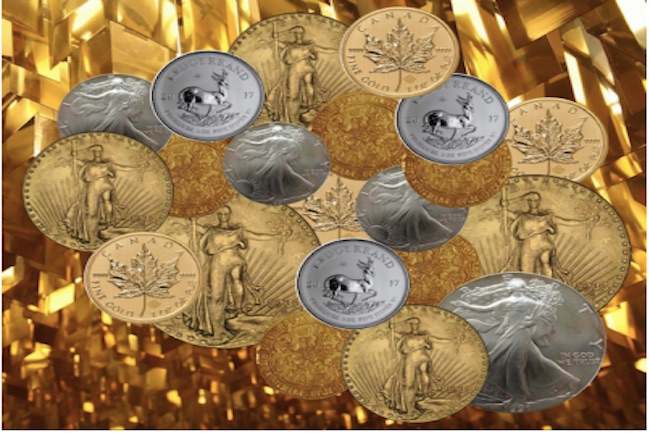Europe Has Been Preparing a Global Gold Standard Since the 1970s by Jan Nieuwenhuijs for Voima Gold
Research reveals that European central banks have prepared a new international gold standard. Since the 1970s, policies that paved the way for an equitable and durable monetary system have gradually been implemented.
In my view, the current fiat international monetary system is ending—unconventional monetary policy has entered a dead end street and can’t reverse. I have writtenabout this before, and will not repeat this message in today’s article. Instead, we will discuss a topic that deserves more attention, namely that European central banks saw this coming decades ago when the world shifted to a pure paper money standard. Accordingly, European central banks have carefully prepared a new monetary system based on gold.
When the last vestige of the gold standard was terminated by the U.S. in 1971, circumstances forced European central banks go along with the dollar hegemony, for the time being. Sentiment in Europe, however, was to counter dollar dominance and slowly prepare a new arrangement. Currently, central banks in Europe are signaling that a new system that incorporates gold is approaching.
Support Our Site

Now is your chance to support Gospel News Network.
We love helping others and believe that’s one of the reasons we are chosen as Ambassadors of the Kingdom, to serve God’s children. We look to the Greatest Commandment as our Powering force.
If you want to read a summary of this article you can skip to the conclusion.
Contents:
- The Rise and Fall of Bretton Woods
- Europe Equalizes Gold Reserves Internationally
- Private Gold Ownership Distribution
- Setting the Stage for a Gold Standard
- Conclusion
- Sources
The Rise and Fall of Bretton Woods
At the end of the Second World War, a new international monetary system called Bretton Woodswas ratified. Under Bretton Woods, the U.S. dollar was officially the world reserve currency, backed by gold at a parity of $35 per ounce. The United States owned 60% of all monetary gold—more than 18,000 tonnes—and promised the dollar to be “as good as gold.” All other participating countries committed to peg their currencies to the dollar. Bretton Woods was a typical gold exchange standard.
It didn’t take long for the U.S. to print and export more dollars than it had gold backing them, which raised concern about the parity of $35 dollars per ounce. As a consequence, foreign central banks started redeeming dollars for gold at the U.S. Treasury. The vast gold reserves of the U.S. began flowing out and ended up mainly in Western Europe.

In an attempt to stabilize the international monetary system, a consortium of eight Western central banks set up the London Gold Poolin 1961 to keep the gold price in the free market at $35. Despite being a member of the Pool, France—that was very critical of U.S. monetary policy—repeatedly redeemed dollars at the Treasury. France thus bought gold at the Treasury, to sell in the free market through the Pool.

In 1965 pressure on the dollar increased and the Pool had to supply huge amounts of gold to sustain the peg. European central bankers started deliberating how to get out of the Pool agreement. Europe didn’t want to defend the peg indefinitely for what was in essence a problem caused by the United States. In 1967 the British pound devalued, which injured confidence in the entire system and France withdrew from the Pool. The situation escalated quickly. Famous gold author Timothy Green writes in The New World of Gold(1982):
Could $35 gold be maintained? The gold pool, except for France (under de Gaulle who shrewdly opted out), thought it could. They had nearly twenty-four thousand tons of gold at their disposal. And William McChesney Martin of the Federal Reserve Board rashly said they would defend the $35 price “to the last ingot.” But the Tet offensive in Vietnam crushed that pledge. Between March 8 and March 15, 1968, the pool had to provide nearly one thousand tons to hold the price at the fix. U.S. air force planes rushed more and more Fort Knox gold to London, and so much piled up in the Bank Of England’s weighing room that the floor collapsed.
On March 15, 1968, the Pool ceased its operations and the gold price in the free market was allowed to float. Though central banks agreed to keep trading gold among each other at $35 and not buy and sell in the free market. A “two-tier gold market” had emerged.
Foreign central banks could still redeem dollars at the Treasury—at the official gold price that was lower than the free market price—but it was seen as “unfriendly.” Early August, 1971, France, again, sent a battleshipto New York to load up on gold in exchange for dollars. A few days later, on August 15, the United States unilaterally decided to end Bretton Woods by suspending dollar convertibility. Europe, Japan, and other countries, were not amused. Dollar reserves, previously backed by gold, had turned into pieces of paper plummeting in value against gold. What followed was a diplomatic conflict between Europe and the U.S.




